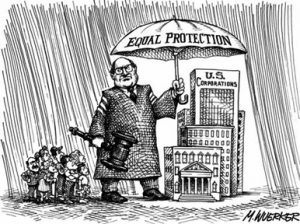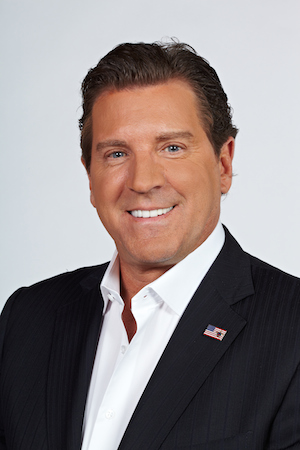 Today is a tale of two lawyers. Actually, two different kinds of lawyers.
Today is a tale of two lawyers. Actually, two different kinds of lawyers.
The first is the ambulance chaser. And no, I don’t mean the kind that literally go running to hospitals where they weren’t called. That may happen, but it’s rare.
No, I’m talking about the rarefied air of Supreme Court litigation — where a select few lawyers race to those whose cases have been accepted to scream that the lawyers that got you this far can’t do this high faultin’ stuff, hire me instead. To get the glory.
The other kind of lawyer is the one that does the grunt work, toiling in a press-free arena.
Those two types are now sharply juxtaposed with a post from intellectual property and free speech lawyer Ron Coleman — see what I did with that link? –in his story on That Great Free First Amendment Thing.
Coleman has been handling a case for years for a rock group called The Slants, by their leader Simon Tam, who were denied a trademark for their band’s name because it was disparaging to Asians. Such was the law, as trademarks would not be issued for “immoral, deceptive, or scandalous matter; or matter which may disparage or falsely suggest a connection with persons, living or dead, institutions, beliefs, or national symbols, or bring them into contempt, or disrepute.”
Coleman took In re Tam and argued that, if the group wanted to reclaim a weaponized racial slur — which the gay community has done with a variety of insults such as dykes and queers — why should the U.S. government stop them from doing so? The government should not be in the business of stopping disparagement.
This was a First Amendment issue and Coleman picked up the ball and ran with it all the way to the Supreme Court. It’s the same issue that the Washington Redskins faced when their trademark was stripped from them for being disparaging.
And a funny thing happened when the court granted cert. The “Chasers” came out of the woodwork to try to snatch his years of toil (done for free) so that they could claim the glory. According to Coleman, “The vultures were calling. Circling. They smelled fresh kill.”:
Experienced federal appellate lawyers knew very clearly what was happening before their eyes: In re Tam was going to be a winner. And now that, after six years of wretched anonymous work by others from the trademark registration application through the TTAB appeal, the panel appeal in the CAFC and the en banc appeal, the vultures wanted in on it…
I got calls. Simon Tam got calls. And they all went more or less like this:
You guys were simply delightful in the Federal Circuit, coming out of New Jersey and all that. Charming country lawyers. But now it’s you against the Solicitor General, the Justice Department. And, really, the justices themselves. They don’t like strangers, and they don’t like amateurs poking around at the First Amendment. So you need us.
The Redskins lawyers told us it was time to hand over our case to them, because we couldn’t win it the way they could win it. We could keep our names on the brief if we wanted, but it was time to get out of the way. This could only be handled by Supreme Court Elite — the SCOTUS regulars, former SCOTUS clerks who knew how to play the justices the way no Jersey bumpkins ever could.
Coleman was not amused. He told them to pound sand. And with the case now over with a resounding 8-0 victory last month, he gets to write about the vultures. And he does.
Which brings us to the second kind of lawyer, the one who toils in virtual anonymity. For Coleman was also helping fellow blogger Patrick Frey, an assistant district attorney out in California who writes the conservative legal blog Patterico’s Pontifications. He’s played along as part of a couple of my April Fool’s gags in years gone by.
Patterico blogged about the Speedway Bomber, Brett Kimberlin, charitably described by Eugene Volokh as a “colorful past convict and current assiduous litigant who has been suing various conservative bloggers.” And Kimberlin sued him in Maryland.
The problem was that Coleman is a New York and Jersey guy, and he needed a Maryland attorney to assist. He tried hard to find a good-sized law firm, that could afford to do the pro bono work, to help. Crickets. Ken White at Popehat sent up the Popehat Signal to look for help. More crickets from the locals.
So Maryland employment lawyer Bruce Godfrey — see what I did there again? — stepped into the breach. He was not part of the big firm that was really needed because a lot of time would be spent, but big enough. And Godfrey came through in spades.
Because the case was just dismissed. Patterico writes:
I can’t say enough about these guys. They stood by me at all times, working for no pay — all for the righteous cause of defending free speech. Ron Coleman juggled this case with his internationally known pro bono case for the Slants, which resulted in total victory and a landmark opinion for free speech. In addition to his fine legal work with Ron on the briefs, Bruce Godfrey dealt with a prickly and difficult client (that’s me!) on discovery issues, and spent countless hours cataloguing, redacting, and organizing the voluminous discovery — not to mention dealing with the court and Kimberlin, and navigating me and Ron through the Maryland legal world.
I’m not going to sit here and claim that I agree politically with Coleman or Patterico or Godfrey on any particular political issue. Because that is not the point. The First Amendment doesn’t belong to the right or the left, it belongs to all of us. When the rights of one are curtailed then the rights of all of us are.
One only need look at places like Turkey, Russia, the Phillipines that have previously experienced some levels of freedom and democracy to see how easily such rights can be lost.
So a tip of my hat today to the three of them, for standing their ground and persevering. We are all better off for the time and effort they have spent.
———-
Updated with other takes:
Patterico Wins, and You Need to Know (Greenfield @ Simple Justice)
Brett Kimberlin lawsuit against Patrick Frey (Patterico) thrown out of court (Jacobson @ Legal Insurrection)
Patterico Vindicated: Judge Rules Against Brett Kimberlin’s Failed Federal Suit (McCain @ The Other McCain)




